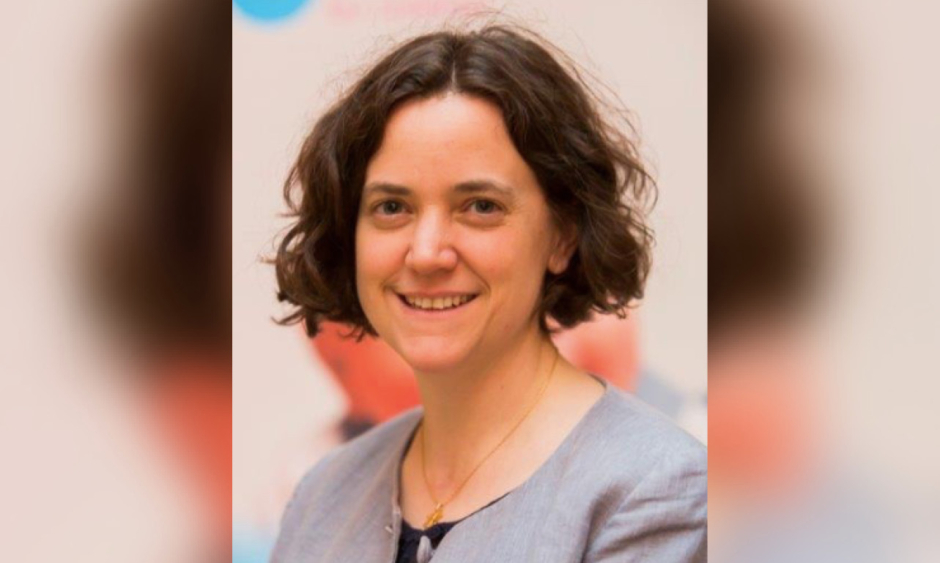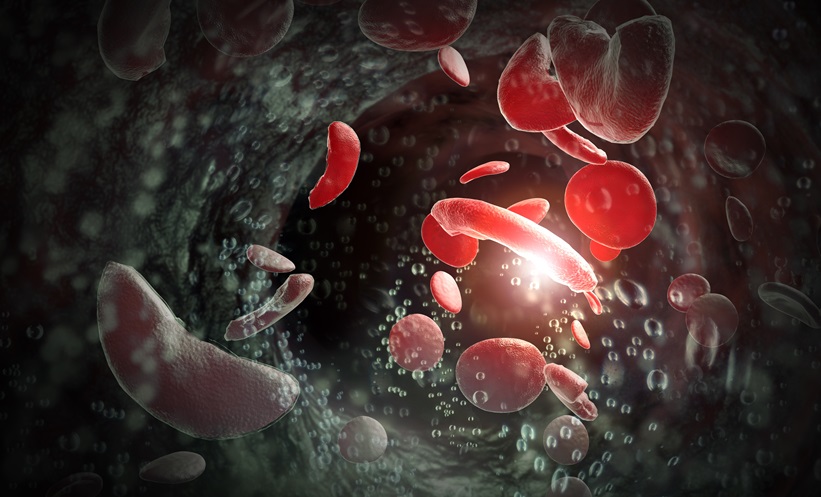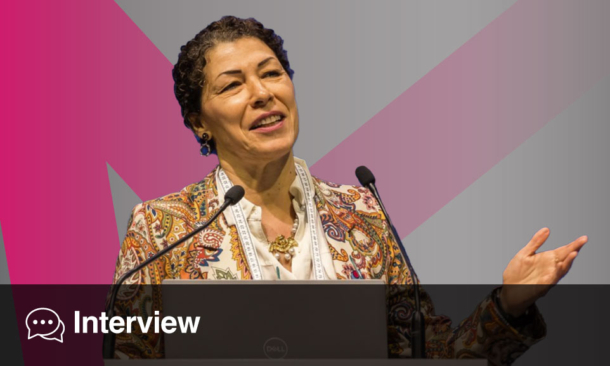Dr Noémi Roy | European Hematology Association (EHA) Guidelines Committee Chair
Consultant Haematologist at Department of Haematology, Oxford University Hospitals NHS Foundation Trust, UK, and an Honorary Senior Clinical Lecturer at the University of Oxford
What do you find most interesting about rare inherited anaemias and haemoglobinopathies?
It’s a wonderful group of people and I love having a long-term relationship with the patients and their families. These are genetic conditions and often they affect different aspects of the red blood cells, such as globin and heme, or cytoskeletal proteins and enzymes that support red blood cell function. What I find fascinating is how one mutation in the β globin gene responsible for causing sickle cell disease can lead not only to such a multisystem disorder, but also the fact that individuals with the same mutation can have such different phenotypes. This can vary from a very mild anaemia to severe disease with multiple life-threatening complications such as stroke and acute chest crises. The challenge for coming years, as well as finding new treatments, will be to unpick the complex genetic and environmental modifiers which together determine, or at least influence, the disease phenotype. Even more intriguing to me are the conditions that result from mutations in genes that affect not only red blood cells, but in fact all cell types in the body. For example, Diamond–Blackfan anaemia arises from mutations in genes that code for ribosomal proteins, a key function in all the body’s cells, and yet the red blood cells seem the most sensitive to perturbation. In congenital dyserythropoietic anaemia (CDA), mutations in proteins that act in the nucleus also have most profound effects on red blood cell integrity. Trying to understand how mutations in these genes cause disease will not only help us find new, better, and targeted treatments, but also give us important insights into how red blood cells normally develop.
Could you tell us about the challenges associated with working in the rare diseases field?
There have been some positive changes in the past few years where rare diseases are concerned. Following a European Union (EU) directive, the UK produced its Rare Disease Strategy in 2013 to improve the diagnosis, treatment, and management of all rare diseases. More recently, the formation of the European Rare Disease Networks funded by the EU has provided a structure for partners across Europe to work together on common goals. It has been very fruitful and satisfying to work closely alongside my European colleagues through the EuroBloodNet. Nevertheless, working in a rare disease field, and more generally working in non-malignant haematology, brings about a set of difficulties. Even the term is misleading, because for someone living with sickle cell disease having a stroke in childhood is as devastating as receiving a diagnosis of cancer would be to someone else. Funding for research is always an issue, and although some rare disease-specific funding exists, it can be difficult to attract long-term funding for some rare conditions. The greatest challenge, however, is getting the patients’ voices heard. We have had some recent successes for rare inherited anaemias with the publication of a James Lind Alliance Priority Setting Partnership in Rare Inherited Anaemias.1 It is important however that the priorities patients have identified are then translated into funded projects.
How do you manage your time between your clinical and academic duties at the University of Oxford?
My role is more clinical than research at the moment, and I love having different aspects to my work: I do outpatient clinics in my hospital and in a larger region; I spend some time looking after the general haematology lab; I run the genetic multidisciplinary meetings for rare inherited anaemias; and I have a role within a larger team in how we organise and run our red cell service across a large geographical area. My research interests are spread across the rare disorders, in particular CDA-1 where I work closely with colleagues in the Weatherall Institute of Molecular Medicine. I am also involved in a number of projects that aim to refine how we treat a very common anaemia – iron deficiency – in different patient groups. I am also very interested in quality of life and in patient-led research, and I am trying to lead a quality-of-life study for people living with sickle cell disease called RUDY2 all across the UK. Finally, I have a role in the organisation of the teaching and training of our haematology trainees, which I find very rewarding. As with any position made up of such varied duties, the key to being able to fulfil all of these roles is the requirement for fastidious organisation and much flexibility, with patient care always as the centre and priority.
Could you summarise the key take-home messages of your recent publication ‘Majeed syndrome: description of a novel mutation and therapeutic response to bisphosphonates and IL-1 blockade with anakinra.’
Having spoken about rare diseases, there is another category, ultra-rare diseases, which describes conditions in which there are fewer than 1:50,000 affected individuals. Majeed syndrome is one such condition, with only a handful of families reported worldwide. It presents as the combination of anaemia (specifically [CDA]), recurrent episodes of non-infective osteomyelitis, and skin manifestations. Although anaemia is a feature, the chronic recurrent multifocal osteomyelitis is the dominant aspect and the one that causes patients the most difficulties. The condition is recessive and due to mutations in a gene called LPIN2. The protein produced by this gene was known to be involved in fat metabolism, but quite how this could lead to recurrent inflammation let alone anaemia is still not entirely clear. The family that we studied not only had a new mutation in this gene, but showed widely different phenotypes between affected members, despite identical mutations. It is now becoming clearer that LPIN2 plays a role in modulating and controlling the inflammasome which is responsible for IL-1 production. Blocking this process with an IL-1 receptor antagonist has clinical benefits for these patients.
Which element of your position as European Hematology Association (EHA) Guidelines Committee Chair do you enjoy the most?
Our committee works very efficiently as a team, and what has been so exciting is that we have all been there from the beginning as the EHA only just started commissioning guidelines in the past 2 years. It means we have had the opportunity to design the terms of reference and methodologies as a group. It’s a great privilege to work with international experts in different sub-specialties of haematology and I have also found it interesting to learn more about the EHA structure, and in particular the wonderful breadth and depth of expertise that comes from the Scientific Working Groups. It has also been a wonderful opportunity to work with other societies to start thinking about the practicalities of producing joint guidelines. I am also quite interested in trying to think about including the patient voice in the process of developing guidelines, and in producing completed guidelines in lay language for patients to be able to access.
EHA 2020 will be a virtual congress this year. What benefits do you think this may have compared to the usual meeting?
Of course at the moment it is difficult to think positively about the fact that we will not be able to gather together in June as we do every year. We think with great sadness of our colleagues and friends who have died as a result of the COVID-19 pandemic, of those who continue to put themselves at risk by looking after infected patients, and of those who are working tirelessly in trying to develop a vaccine and to evaluate different treatments. Having said all of that, it’s quite a challenge and ambitious for EHA to put the congress together virtually and we are all looking forward to being able to see what new research is ready to be shared and discussed in this format. One of the advantages will be that more people will be able to access the congress if travel is no longer an obstacle, and I think it will be a great opportunity for people who would not normally have been able to attend in person to access the presentations, posters, and discussions in this new format.
EHA are hosting webinars related to the care of haematology patients during the COVID-19 pandemic. As Guidelines Committee Chair, could you tell us how the guidelines have been updated for these patients?
EHA has been very proactive from the very beginning of the pandemic in providing a trusted source of information for clinicians in these uncertain times. We cannot, by definition, develop guidelines in a new pandemic as these require evidence in order to make recommendations. However, numerous clinicians and scientists have been able to provide guidance based partly on some evidence and partly on expert opinion on the likely safe courses of action that should be taken in a variety of conditions. I believe this has been helpful to haematologists in many countries in trying to make decisions about which treatments to continue or stop, or how some treatment modalities should be modified to ensure both patient safety as well as efficacy against their underlying disease. In the Guidelines Committee, we have reviewed this guidance at short notice, sometimes multiple versions as the accumulating evidence or circumstances were changing. We will continue to do so as the situation evolves.







